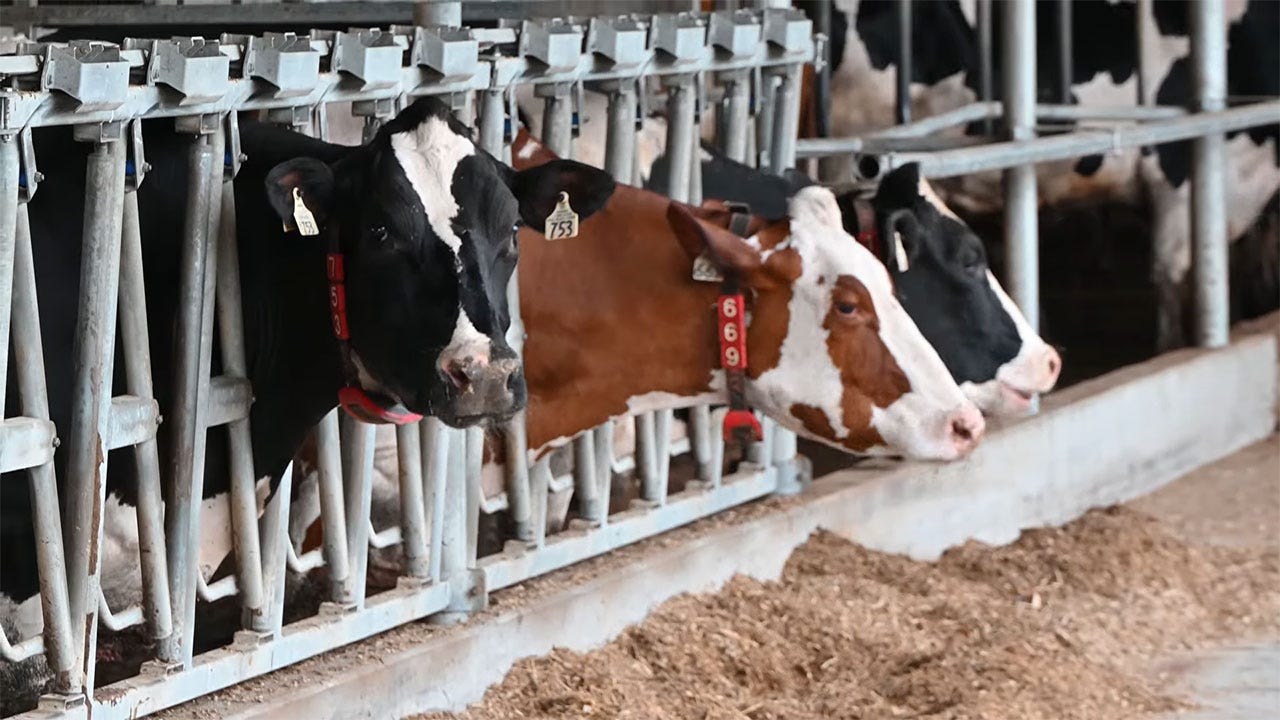A wet, cool spring led to planting delays on Glenn Brake’s farm. But July’s heat has his crops back on track and looking good.
“Even though planting was delayed, by early July all the corn and beans were in the ground,” he says. “I haven't seen this type of a growing season for a long time. It's very encouraging.”
Brake owns Oakleigh Farm, a dairy farm in Mercersburg, Pa., that includes 139 milking cows with 130 young stock and heifers in a robotic milking facility. He grows more than 400 acres, including 100 acres of alfalfa, 200 acres of corn, 70 acres of small grains, and full- and double-crop soybeans.
Unlike last season when severe drought knocked out most of his corn, leaving very little to harvest for grain, Brake says the farm has seen showers almost every week.
“I do the routine spraying for alfalfa leafhopper. Everything seems to be very routine," he says. "The herbicides have been working well in the cornfields just because the moisture has been right and things like that. We haven't had an April, May, June, July like this in a long time. I know other areas have been way too wet, but our area has been pretty good.”

STRESSED COWS: But as good as the heat has been for Brake’s crops, it’s been stressful on the cows. "That has been challenging,” he says. “With the humidity, keeping our bedding dry and things like that, that has been challenging. And we’re keeping a close eye on mastitis because of the hot, humid weather.”
The cows are fed a heavy forage diet, and if all goes well, Brake hopes to get five cuttings of alfalfa hay this season.
Since he grew and harvested a nice mix of grass forages last season, he still has plenty of forages carried over, and he has even switched his heifers to a more grass-based diet.
Too hot for cows
But as good as the heat has been for Brake’s crops, it’s been stressful for his cows.
"That has been challenging,” he says. “With the humidity, keeping our bedding dry and things like that, that has been challenging. And we’re keeping a close eye on mastitis because of the hot, humid weather. Some of these days have been very hot. It's been very uncomfortable, for people and animals.”
Overall production is down more than 5 pounds a head. He’s also seen an uptick in overall somatic cell counts.

FANS HELP: July’s heat tested Glenn Brake’s cows. The high-volume, low-speed fans installed when the barn was built a few years ago help keep the cows cool enough to not drop production too much, but it doesn’t eliminate stress.
Since he’s at capacity for housing, Brake says it’s hard to make any big in-season changes for cow comfort. One thing he is doing, though, is drying out stressed cows a few weeks early and sending them out to pasture.
While overall milk production is down, Brake says it hasn’t made much of a dent in the components, which are what determines most of his milk check. Butterfat is averaging 4.01%, while protein is averaging 3.2%.
“It's been stable,” he says. “Our forages have been good, and that's been rather stable. We haven't seen a whole lot of percentage change; nothing that's glaring or anything like that. It was pretty much all in the total pounds. Cows kept chewing and ruminating, so we're pretty good there.”
Overall, Brake says he’s optimistic for the rest of the summer.
"If we continue to get these rains, yields for corn and beans should be above average, and I hope to start to rebuild inventories [feed] particularly after this last year, which was very dry,” he says. “We have a lot of forages in the barn and stored, more than normal at this time. So hopefully it continues, and we're able to build up our grain inventories this fall.”